You might not consider Lasse Hallström’s The Hundred-Foot Journey a visual effects film, and in a sense that is true, but some innovative effects techniques ranging from Klaus Cam helicopter plates to carefully selected shooting locations and reflective table-tops helped tell the story of two restauranteur families. We talk to visual effects supervisor Brendan Taylor about the film.
The central effects challenge in the film was that two restaurants – Le Saule Pleureur and the Maison Mumbai – had to be located in a southern French village 100 feet apart. A scouting effort proved unsuccessful in finding such a location, leading to consideration of several alternatives.
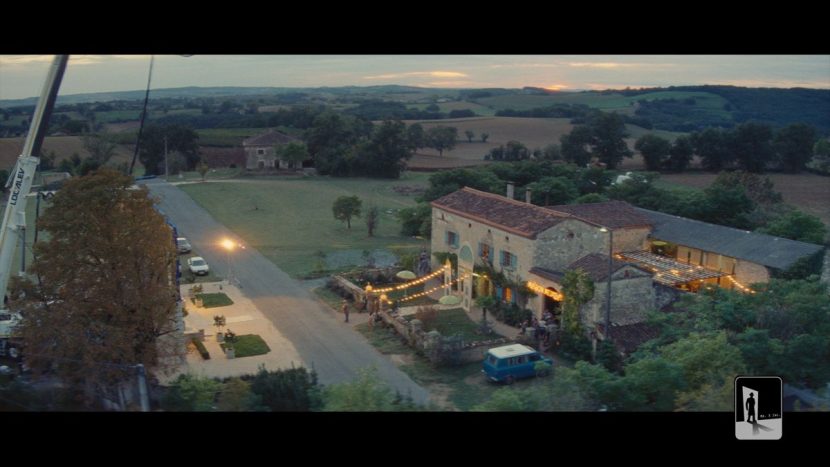
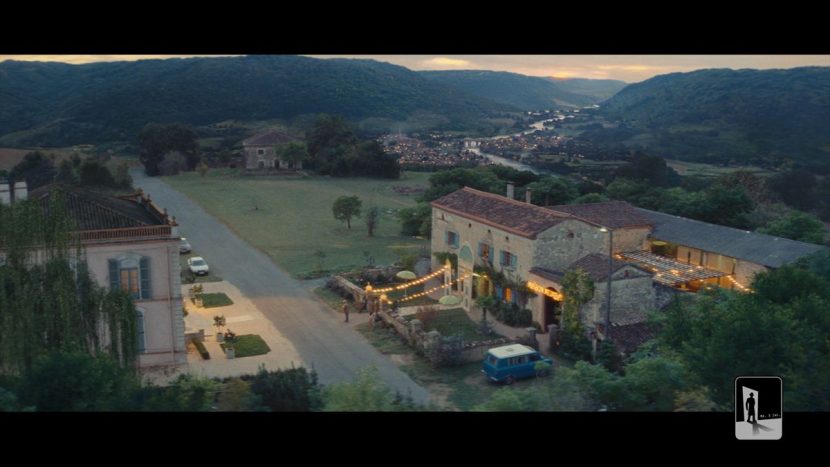
“Initially,” recalls Taylor, “production thought they could shoot half of the scene one way, and then pack up and shoot the other half of the scene – the close-ups – going the other way at a completely different location. Or they thought they might put up a bluescreen and do an entire side of it digitally.”
“The first option would be a production nightmare,” he adds. “Can you imagine having to do the same scene twice and what if the lighting doesn’t match? It would just be a disaster. The second option is just way too big, because so much of the movie takes place in the middle of the two restaurants – so putting a bluescreen there wouldn’t have helped knowing how many shots there’d be. There could be 200 shots of a complete CG environment work – and they didn’t have the budget for that.”
Ultimately, the filming location for the Maison Mumbai was chosen as the ‘master location’. The building faced a large field, so production was able to pave a 75 meter long stretch of road in front of it. “Then across from the Maison,” explains Taylor, “production designer David Gropman built the first floor facade of Le Saule Pleureur with a bluescreen up top. That would be used for almost all the scenes. It was great because we were shooting anamorphic and so the wide lens meant you never really saw the top of the blue, and if we did then the cinematographer Linus Sandgren could tip down a bit for us.”
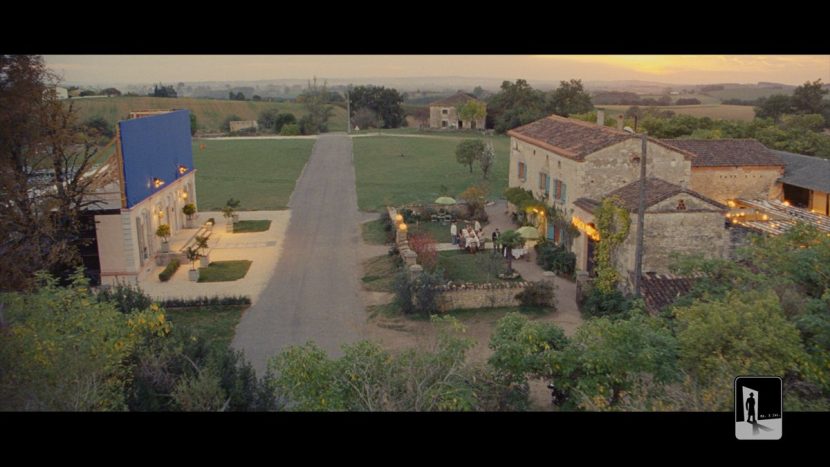
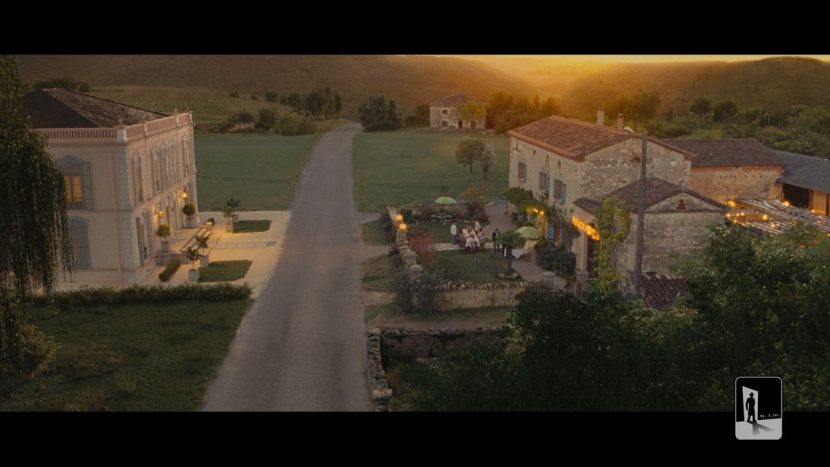
Visual effects from Mr X., supervised by Aaron Weintraub, would then be used to combine plates of the Maison Mumbai location with those of a different building filmed elsewhere, as well as fleshing out the area with environment extensions and digital trees.
For those elements, in particular, Taylor lead a team that acquired vast amounts of reference from southern France. “The great thing about the location we were at was that you can drive anywhere in any direction and you’re in the most beautiful countryside you’ve ever seen,” he notes. “On the weekends we would go and drive and shoot stuff and I amassed a huge library of stills, something like 10-15,000 of stills for every possible scenario to be used as textures but also to be used as matte painting reference and elements.”
Armed with the stills, Taylor engaged matte painter Tim Warnock to “go through them with a matte painter’s eye looking at the trees, the skies, the river and flesh out some concepts. We had this major pullback at the end that would need CG, so we started with that and then based all the other shots on that requirement. We picked close to the end of that shot and Tim did a gorgeous mock-up with the stills and reference. He a real knack for nailing the mood.”
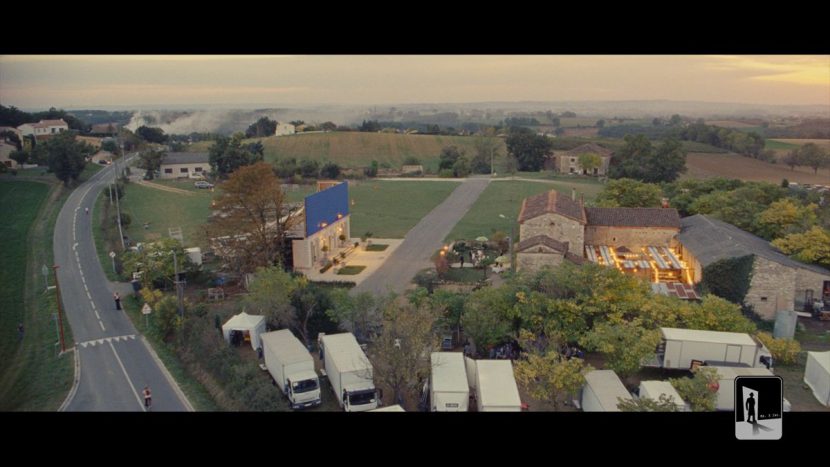
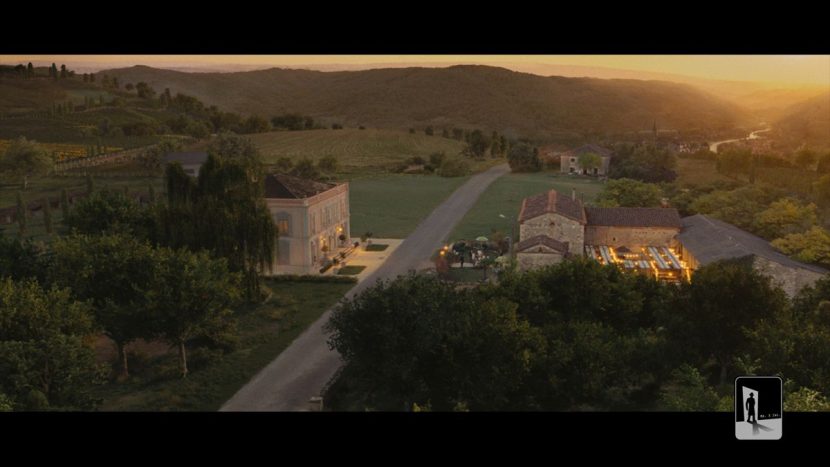
On set, Taylor’s team generally relied on ‘old school’ measurement and survey techniques to fit in with the film’s budget. “Le Saule Pleureur is really like a box,” says Taylor. LIDAR would have been helpful for tracking but it would have been expensive. I had a Leica DISTO and we took measurements that way. We took HDRs in every setup, especially where I thought we would be doing CG trees.”
“Because we were shooting on film,” adds Taylor, “the production also gave me a camera crew to go shoot as much film reference as I wanted. Which is so important when you’re dealing with trees and high and wide landscapes. We got a cherry picker one day to shoot full panoramas as the lighting conditions changed, so we could use that for our high and wide shots.”
The aforementioned final pullback shot showing both restaurants was considered a signature moment and so drove the look development for the final views of the location. It was envisaged as one that would follow the actors walking between the restaurants and then pull out to reveal high aerial views of the area. Working out how to accomplish the specifics of that shot proved another significant challenge.
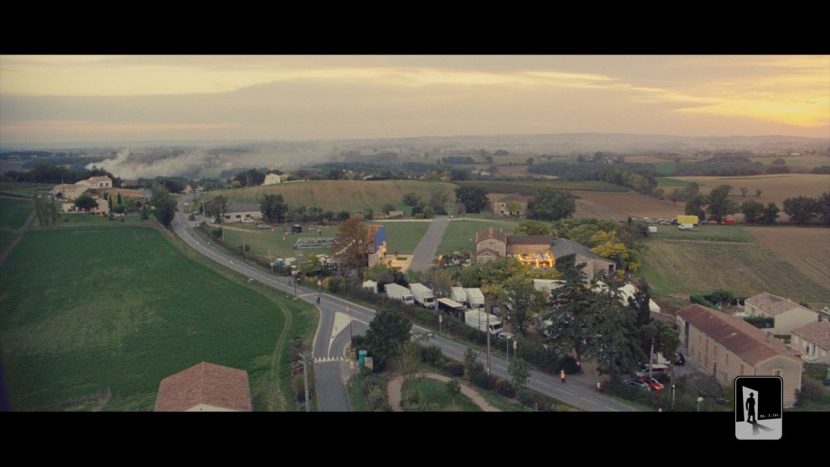
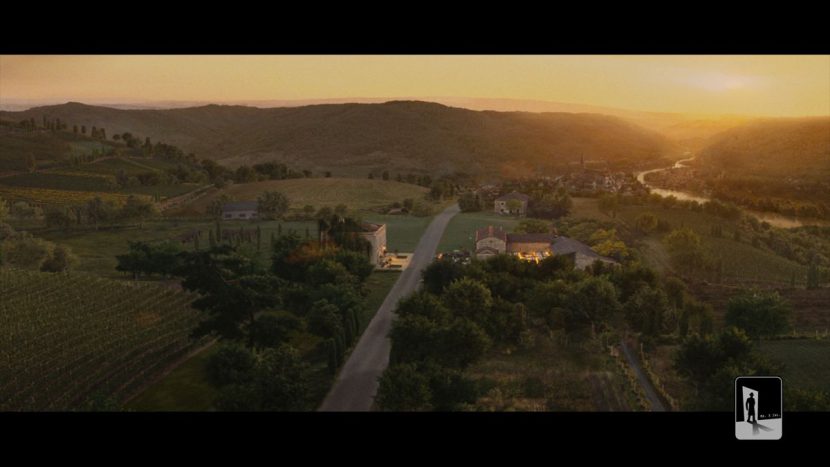
“We looked into drones,” recalls Taylor, “but in a moment like this which is the last moment in the movie, you want it to be a nice slow steady pullback and drones can’t give you that. They get buffeted by the wind, they move all over the place, they don’t have the elegance – a drone pilot can’t do what a camera operator can do.”
After toying with the idea of a cable-cam pullback and shooting with a typical helicopter camera rig, DOP Sandgren suggested the Klaus Cam to solve the shot. “It’s a gyro-stablized rig that hangs from a wire attached to a helicopter 50 feet above,” explains Taylor. “Because we needed to start two feet off the ground, you would have helicopter blades chopping the set with a normal chopper set, and then even getting low enough to see people’s faces, you’d have rotor-wash impacting the set.”
“So we needed to be high enough up that the rotor wash isn’t hitting anything and that is solved by the Klaus Cam,” says Taylor. “The rope is really long and these helicopter pilots are amazing because the mechanism looks like a Steadicam. They were keeping so close to the ground until the pullback.”
The Klaus Cam in action.The set-up could only be filmed twice since it needed to feature a sunset. Mr. X then tracked the plate and began mocking up views and the necessary animation. “Our base camp was right there so we had to contend with all the trucks and equipment (which we replaced with trees. We also took the sky from the first take and the sunset from the second take. It was one of the biggest challenges of the shot with getting the levels and halation right. Mr. X played around with digital trees and went to great lengths to get different trees in there. Le Saule Pleureur is the name for a weeping willow so we put a CG weeping willow in there too.”
Elsewhere in the film, some practical techniques also helped tell the story of the character Hassan’s experiences cooking in a stylish Paris restaurant called Baleine Grise. “Lasse was very adamant in having stainless steel tables,” says Taylor. “He wanted to have a laboratory-like look. Of course, the first thing I think about is blue spill. You can try and counteract that with lighting, but in the end it’s a semi-reflective surface so it’s going to reflect regardless of what you pump onto it.”
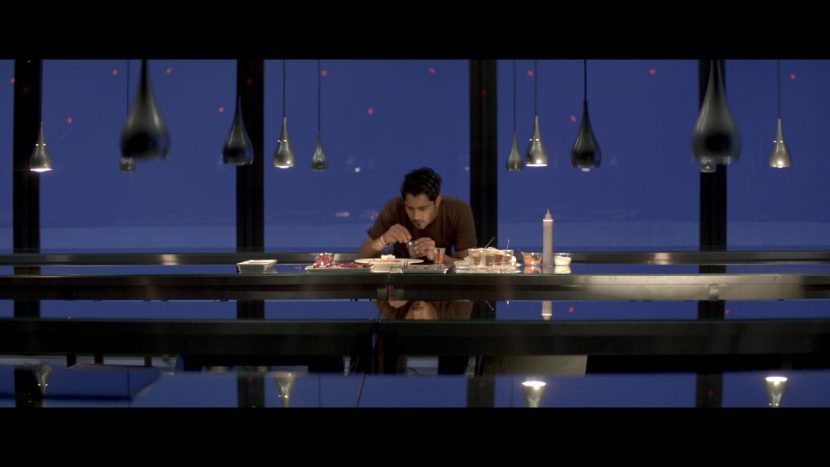
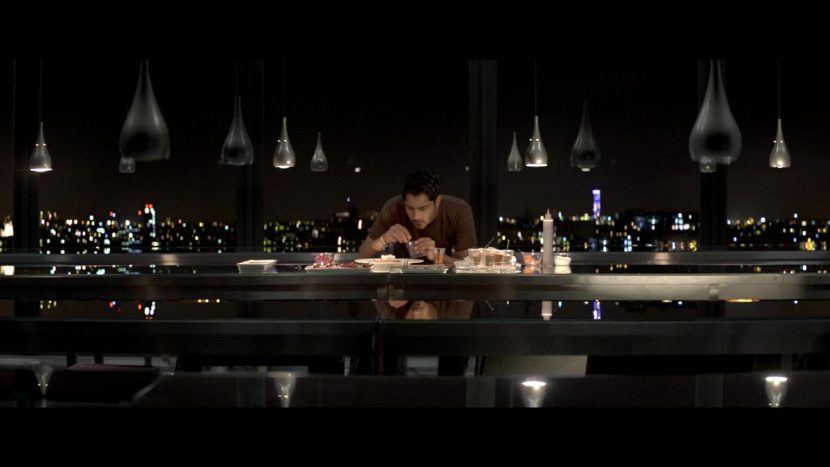
“They wanted it to be lit by these small little lights hanging down. There’s 40 chefs in there and I was wondering what to do because we’re talking impossible amounts of roto. So what we came up with was, as opposed to trying to eliminate the blue spill, I thought why not take advantage of it? So we put mirrors on top of all the surfaces so it was reflecting the bluescreen. They’re supposed to be in the design of the restaurant. So when it’s reflecting you put sky out there, and that reflects and integrates into the set.” Taylor’s own effects company Mavericks VFX completed many of these Baleine Grise shots, and ultimately 180 of the film’s total 300 effects shots.
Watch Mr. X’s breakdown of the Paris fly-over shot.A couple of Paris exteriors featuring Hassan required visual effects work, too, including for a ‘fly-over’ shot over the city. For this, Mr. X executed a CG nighttime Paris environment that was built referencing Gigapan images Taylor acquired on a rooftop. “It was the top level of a parking structure,” he says, “so I had full access 360 degrees. Every 15 feet I shot bracketed stills. It took a really long time – nearly 6 hours. We plugged it into the program and this image based modeler looks at the parallax between the shots and is able to derive a 3D model from it. Mr. X still had to model everything but used this as reference.”
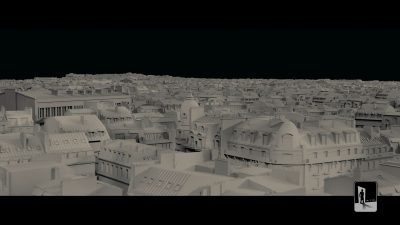
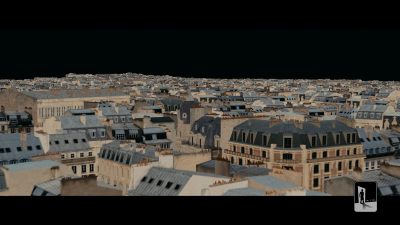
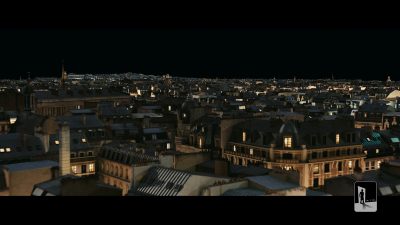
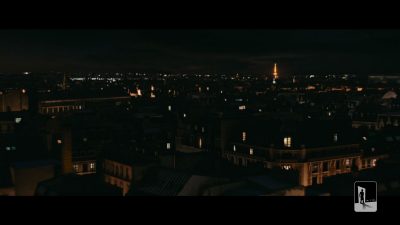
Still further VFX shots were produced for an earlier critical family riot fire sequence in India. “They shot the scene with a couple of flame bars and it needed to be bigger,” states Taylor. “We got an elements unit in Toronto and built a small buck and painted it black and lit it on fire. Then Switch VFX in Toronto did that whole scene and did a fantastic job.”
All imagery copyright 2014 DreamWorks Pictures.
